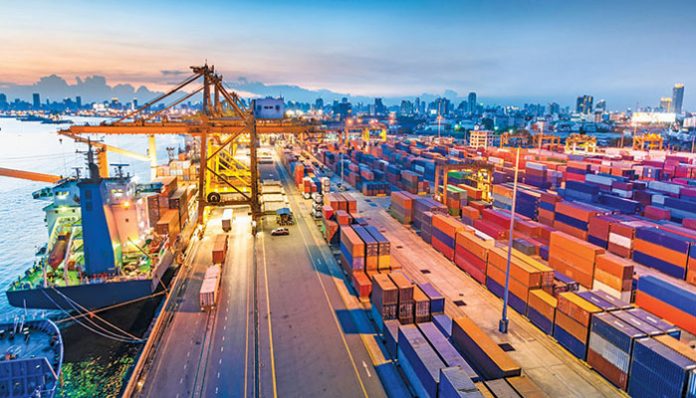The recent announcement by Nitin Gadkari, Union Minister of Road Transport & Highways and Shipping, of involving aviation sector in a multi-modal logistics hubs policy has created aspirations in the air cargo sector. Let’s have a look on how the industry reacts to the announcement. Will the move help the air cargo sector grow further? Or, has the long-awaited initiative accidentally stopped the growth of the sector till date?
Kalpana Lohumi
Dr. Guruprasad Mohapatra, IAS, Chairman, Airports Authority of India
The country has firmed up the contours of its ambitious multi-modal programme to reduce logistics costs and make the economy competitive. The strategy involves a reset of India’s logistics sector from a ‘point-to-point’ model to a ‘hub-and-spoke’ model, which involves railways, highways, inland waterways and airports, to put in place an effective transportation grid. Multiple initiatives to improve logistics efficiency are already underway including building of economic corridors apart from multi-modal logistics parks.
As a part of strategy for ‘integrated approach for logistics’ airports will be part of multi-modal logistics hubs. Government of India aims at setting up 400 regional airports with facilities for pre-cooling cold storages among other logistics solutions.
The establishment of multi-modal logistics hub in the vicinity of an airport connected with rail, road and port will form part of the value-added services chain in view of the strategic location and seamless integration. establishment of multi-modal logistics hub near airport where air cargo potential exists will certainly ease all processes providing just-in-time cargo facilities with reduced cost thereby boosting the growth of air-cargo sector. The integrated logistics will increase India’s exports, provide employment opportunities, will be cost effective, and will make goods cheaper in the country.
Vipan Jain Chairman, BAR India Cargo – NR
This is a fair move in right direction under road transport & highways and shipping; aviation sector will now be a part of multi-modal logistics hubs. At the same time, would not like to see it as opportunity lost as all business segment finds its own way to grow perhaps at slightly more cost and time. Now the challenge will be to create a smooth chain to make multi-modal successful, as even currently we find some delays in air-to-air sector itself. The common IT platform and single window is the only solution otherwise this may lead to a bigger issue. What is important to understand is that the biggest challenge in every industry is to create a bridge between policy introduction and implementation on ground.
Highlights:
- The strategy involves a reset of India’s logistics sector from a ‘point-to-point’ model to a ‘hub-and-spoke’ model.
- Government of India aims at setting up 400 regional airports with facilities for pre-cooling cold storages among other logistics solutions.
- The establishment of multi-modal logistics hub near airport where air cargo potential exists will certainly ease all processes providing just-in-time cargo facilities with reduced cost.
- It’s never too late but the acceleration that has started with the new regime should take every pending issue within proper timeframe and strict monitoring of performance of contractors or be it Public Private Partnership.
- So far, highways, ports, inland waterways and railways were part of the multi-modal logistics hubs initiatives in IndiaThose hubs would now be logistically complete by establishing the vital link with aviation sector.
- Any single mode of transport cannot perform effectively unless it is a part of a multimodal transport system.
- The challenge will be to create a smooth chain to make multi-modal successful, as even currently we find some delays in air-to-air sector itself.
- The common IT platform and single window is the only solution otherwise this may lead to a bigger issue.
Samir J Shah, Chairman, FFFAI
Appreciations to combined efforts from the ICEGATE based EDI system, single window clearance and ensuing tax rationalisation through GST. Under the new tax regime, the country will be connected seamlessly and with the required speed. First and direct impact of GST would be on manufacturing, domestic consumption and export/import industry in the country. Meanwhile, government is working towards formulating an integrated, multi modal logistics & transport policy to reduce logistics costs in the country for making Indian products more competitive. As announced, the plan also includes developing many multimodal logistics parks across the country to serve as centres for freight aggregation and distribution, multimodal transportation, storage and warehousing and value-added services. So far, highways, ports, inland waterways and railways were part of the multi-modal logistics hubs initiatives in India. Those hubs would now be logistically complete by establishing the vital link with aviation sector. The Multimodal Transport Act, which was passed by the Government of India in 1993, and amended in 2000, facilitated multimodal transport operations empowering multimodal transport operators, and at the same time imposing liability, to ensure end to end transportation without hassles and transgression. The Act helped the shippers in India in a big way as now they could ship goods from any inland point in India (except J&K) to any destination in the world under a single Contract of Carriage. Accordingly, multimodal transport in India has successfully converged containerised road/rail freight, ICDS, CFSs and ports. Owing to infrastructure and logistic issues, air cargo has not been looked at as a viable option for the multimodal operators.
Bharat J Thakkar, Past President and Permanent Member – Board of Adviser, ACAAI and Founder & Joint Managing Director, Zeus Air Services
With National Civil Aviation Policy (NCAP) and new announcements of Union Minister of Road Transport & Highways and Shipping, we are on the fast mode to achieve what we have missed in past. It’s never too late but the acceleration that has started with the new regime should take every pending issue within proper timeframe and strict monitoring of performance of contractors or be it Public Private Partnership.
Moreover, the outstanding among them must be rewarded for their performance on such initiatives; this will transform India into a modern air cargo hub. While trading between the nations, the merchandise despatched from factories to the Sales depot, need not travel directly between the trading nations. This flexibility in the physical transportation has witnessed the emergence of motorways, railways, sea ports and airports has emerged as hubs.
It will be interesting to note that no major international air cargo hub is located in South/Central & North America, Australia Africa and Canada. A study of the existing air cargo hubs would identify certain following common threads that have helped these airports as major hubs. This has enabled proximity to international markets It exuberates absence of red tapes or excessive regulatory paper work.
Moreover, medium capacity of all cargo fleet with an uplift tonnage between 15 to 25 tonnes needs to be positioned at the identified hub. There can be only one hub located in India which will open up currently subserviced markets to the carriers that can participate.
India offers a stable political environment, skilled workforce but existing airport infrastructure and user charges will act as a major dis incentive to attract customers to use the hub. One other initiative that may be considered is permitting of agents bonded handling premises inside the hub airport as this will enhance the marketing efforts to develop the hub. Cargo Village within to be declared as an SEZ, would drastically reduce the regulatory compliance and also bring in the requisite investment in modern equipment to process the transhipment cargoes.
Shantanu Bhadkamkar, Past President, FFFAI
In any logistics solution, efficient and effective last mile connectivity is a major consideration. To make movement of goods seamless and efficient multimodal transport and multimodal hubs are critical. Any single mode of transport cannot perform effectively unless it is a part of a multimodal transport system. The advantages of multimodal transport are many, and include door-to-door transportation of goods being coordinated and planned as a single operation. It minimises the loss of time and risk of loss, pilferage and damage to the cargo at trans-shipment points. Another advantage being the ability to transport goods door to door under a single document. The aviation sector therefore needs to either create a multimodal hub or integrate itself with other multimodal logistics hubs for it to realise its full potential. With growth in B2C. e-commerce, the sector will witness a great surge in volumes, the demands on reliability and competitiveness will also be very high. Not just e-commerce companies and integrators but also airports and town authorities are keen to develop air cargo multi-modal hubs for the economic benefits it brings by growth in the economy.












